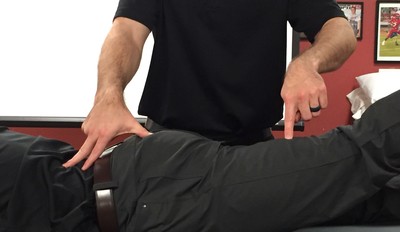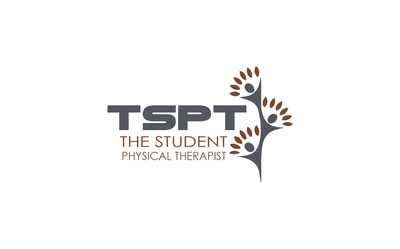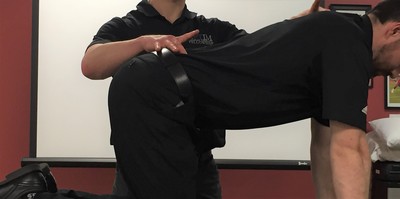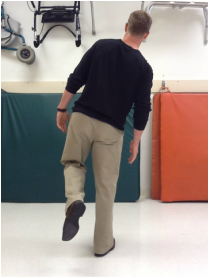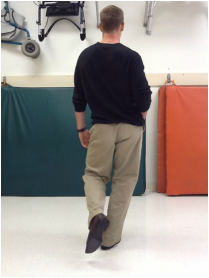- Home
- About Us
- TSPT Academy
- Online Courses
-
Resources
- Newsletter
- Business Minded Sports Physio Podcast
- Day in the Life of a Sports PT
- Residency Corner
-
Special Tests
>
-
Cervical Spine
>
- Alar Ligament Test
- Bakody's Sign
- Cervical Distraction Test
- Cervical Rotation Lateral Flexion Test
- Craniocervical Flexion Test (CCFT)
- Deep Neck Flexor Endurance Test
- Posterior-Anterior Segmental Mobility
- Segmental Mobility
- Sharp-Purser Test
- Spurling's Maneuver
- Transverse Ligament Test
- ULNT - Median
- ULNT - Radial
- ULNT - Ulnar
- Vertebral Artery Test
- Thoracic Spine >
-
Lumbar Spine/Sacroiliac Joint
>
- Active Sit-Up Test
- Alternate Gillet Test
- Crossed Straight Leg Raise Test
- Extensor Endurance Test
- FABER Test
- Fortin's Sign
- Gaenslen Test
- Gillet Test
- Gower's Sign
- Lumbar Quadrant Test
- POSH Test
- Posteroanterior Mobility
- Prone Knee Bend Test
- Prone Instability Test
- Resisted Abduction Test
- Sacral Clearing Test
- Seated Forward Flexion Test
- SIJ Compression/Distraction Test
- Slump Test
- Sphinx Test
- Spine Rotators & Multifidus Test
- Squish Test
- Standing Forward Flexion Test
- Straight Leg Raise Test
- Supine to Long Sit Test
-
Shoulder
>
- Active Compression Test
- Anterior Apprehension
- Biceps Load Test II
- Drop Arm Sign
- External Rotation Lag Sign
- Hawkins-Kennedy Impingement Sign
- Horizontal Adduction Test
- Internal Rotation Lag Sign
- Jobe Test
- Ludington's Test
- Neer Test
- Painful Arc Sign
- Pronated Load Test
- Resisted Supination External Rotation Test
- Speed's Test
- Posterior Apprehension
- Sulcus Sign
- Thoracic Outlet Tests >
- Yergason's Test
- Elbow >
- Wrist/Hand >
- Hip >
- Knee >
- Foot/Ankle >
-
Cervical Spine
>
- I want Financial Freedom
- I want Professional Growth
- I want Clinical Mastery
Trendelenburg Test
Purpose: To detect gluteus medius tendon tears or weakness in the hip abductors.
Test Position: Standing.
Performing the Test: Patient stands on one leg. There are two types of positive tests. A compensated trendelenburg occurs when the patient's trunk leans ipsilaterally to the side of the stance leg.An uncompensated trendelenburg occurs when the examiner observes contralateral pelvic drop. A normal test result is when the patient is able to maintain a level pelvis without either of these substitutions. It should be noted that a hip hike is not a true trendelenburg. The examiner should also watch for any deviations in the transverse plane, which could signify mobility impairments.
Diagnostic Accuracy: Sensitivity: .722; Specificity: .769 ("Prospective evaluation of magnetic resonance imaging and physical examination findings in patients with greater trochanter pain syndrome").
Importance of Test: A very common gait abnormality seen in public is trendelenburg gait. Either the hip drops or we see compensatory trunk motion to make up for the weakness of the hip abductors. During stance phase of the gait cycle, the hip abductors (the gluteus medius is one of the main ones used in gait) are responsible for maintaining a level pelvis, while standing on one leg. If the muscle is weak or its innervation poor, we often see the result as an individual walking with their opposite hip dropping or their trunk leaning to the ipsilateral side to make up for the weakness.
Test Position: Standing.
Performing the Test: Patient stands on one leg. There are two types of positive tests. A compensated trendelenburg occurs when the patient's trunk leans ipsilaterally to the side of the stance leg.An uncompensated trendelenburg occurs when the examiner observes contralateral pelvic drop. A normal test result is when the patient is able to maintain a level pelvis without either of these substitutions. It should be noted that a hip hike is not a true trendelenburg. The examiner should also watch for any deviations in the transverse plane, which could signify mobility impairments.
Diagnostic Accuracy: Sensitivity: .722; Specificity: .769 ("Prospective evaluation of magnetic resonance imaging and physical examination findings in patients with greater trochanter pain syndrome").
Importance of Test: A very common gait abnormality seen in public is trendelenburg gait. Either the hip drops or we see compensatory trunk motion to make up for the weakness of the hip abductors. During stance phase of the gait cycle, the hip abductors (the gluteus medius is one of the main ones used in gait) are responsible for maintaining a level pelvis, while standing on one leg. If the muscle is weak or its innervation poor, we often see the result as an individual walking with their opposite hip dropping or their trunk leaning to the ipsilateral side to make up for the weakness.
Reference:
P. A. Bird1, S. P. Oakley1, R. Shnier1, B. W. Kirkham. "Prospective evaluation of magnetic resonance imaging and physical examination findings in patients with greater trochanter pain syndrome." Arthritis Rheum 44(9): 2138-2145, 2001. Web. 08/25/2012.
P. A. Bird1, S. P. Oakley1, R. Shnier1, B. W. Kirkham. "Prospective evaluation of magnetic resonance imaging and physical examination findings in patients with greater trochanter pain syndrome." Arthritis Rheum 44(9): 2138-2145, 2001. Web. 08/25/2012.
Copyright © The Student Physical Therapist LLC 2023

